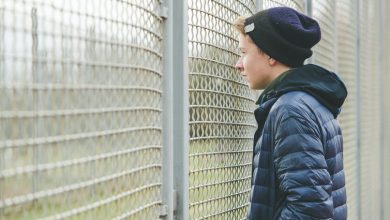Equipping schools for cardiac arrest in young people

Schools have been dealing with scraped knees, sprained ankles and the occasional broken bone for as long as children have played running games and climbed trees.
While legislators have reigned in many of these childhood activities, students still find ways to get hurt, despite the best efforts of the school’s risk management team.
A school will better manage these needs with a dedicated space for students to recover from a fall, or perhaps to assuage a dehydration-triggered headache. So, we need a room, but what sort of supplies and equipment will be required?
Kitting out your first aid room requires a risk assessment, including a survey of medical conditions within your school community, and an assessment of needs versus resources.
Beyond the general first aid supplies, like antiseptic solutions, anti-histamines, icepacks, bandages, and tweezers and soothing ointments, requirements may vary due to climate (stocking electrolysing products for hotter locations), or surrounding threats such as prevalence of paralysis ticks in your region). Do you have any students with anaphylactic reactions?
There will be state regulations governing how your school prepares for health emergencies affecting these students.
In Victoria for example, any school that has enrolled a student at risk of anaphylaxis must by law have a school anaphylaxis management policy in place, which will include an EpiPen, and staff members trained as school anaphylaxis supervisors.
Due to contamination risks, Queensland’s education department website recommends that “liquid rather than cream-based antiseptic solutions (diluted 1:10) be used”. State department education websites are the first port of call for updates on regulations, recommendations and requirements.
Cardiac Arrest not just an issue for high-risk groups
According to Red Cross first aid trainer, Anthony Cameron: “While an actual ‘heart attack’, where a diseased, narrowed or blocked artery disrupts blood flow to the heart is rare in children, a cardiac arrest is far more common.”
Cardiac arrest involves the sudden, unexpected loss of heart function, breathing and consciousness. It occurs when the heart’s electrical impulses suddenly become chaotic, causing the heart to abruptly stop pumping blood effectively – known as ventricular fibrillation. The victim becomes unresponsive, has no detectable pulse and stops breathing.
It can and does affect people of all ages and can occur in children due to drowning, choking, receiving an electric shock or from respiratory related medical conditions such as asthma and anaphylaxis, trauma, poison or congenital abnormalities.
A 2014 paper published in medical journal Heart Rhythm titled, ‘Incidence of sudden cardiac arrest in high school student athletes on school campus’ included the release of research results conducted by Drezner et al. The article reported: “The incidence of SCA in high school student athletes is higher than previous estimates and may justify more advanced cardiac screening and improved emergency planning in schools.”
What is a Defibrillator or AED and when it is needed?
Kerry Packer made the defibrillator more available, after one famously saved his life when he suffered a heart attack, and was revived by the crew of an ambulance, which had been fitted with a defibrillator. In response he offered to “go 50/50” with then premier Nick Greiner to equip every ambulance in NSW with a defibrillator. Nick Greiner accepted, and they are now colloquially known as ‘Packer Whackers’.
An automated external defibrillator (AED) is a portable, computerised device which is used to deliver an electrical shock to the heart (defibrillation) of a person who is experiencing the most common cause of sudden cardiac arrest, according to Anthony Cameron.
Who can use an AED?
Mr Cameron said anyone can. “From first responders to untrained bystanders, anyone can use an AED to respond confidently and appropriately during an emergency.”
“When used properly and with appropriate precautions, AEDs are very simple to operate and pose no risk to either the rescuer or the victim. They are designed to deliver an electrical shock only when it detects it is required.”
Learn CPR
Mr Cameron indicated that “early CPR is an integral part of providing lifesaving aid to people suffering sudden cardiac arrest because it helps to circulate oxygen-rich blood to the brain”.
He explained that after delivering a shock most AEDs will prompt the operator to begin CPR while the device continues to analyse the victim, and instruct the user on how to perform CPR using audio or video instructions.
“While this is helpful, Red Cross recommends that already having CPR skills will increase a person’s confidence and minimise panic when responding to an emergency.”
With much to consider when equipping the school first aid room, the ideal first step is to refer to state education department websites. The state sites are replete with both stipulated regulations, and helpful recommendations for first aid practice, policy and paraphernalia.
Call 1300 367 428 to book into a First Aid course with Red Cross or visit www.redcross.org.au/firstaid







